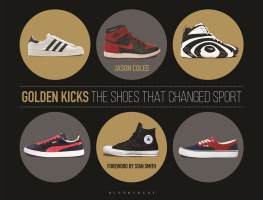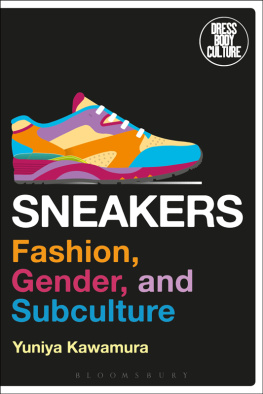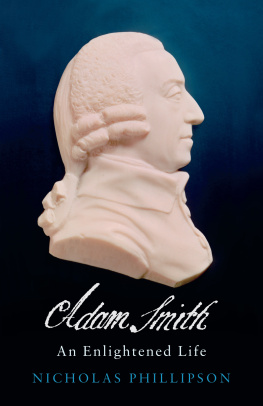Nicholas Smith - Kicks: The Great American Story of Sneakers
Here you can read online Nicholas Smith - Kicks: The Great American Story of Sneakers full text of the book (entire story) in english for free. Download pdf and epub, get meaning, cover and reviews about this ebook. year: 2018, publisher: Crown Publishing, genre: Non-fiction. Description of the work, (preface) as well as reviews are available. Best literature library LitArk.com created for fans of good reading and offers a wide selection of genres:
Romance novel
Science fiction
Adventure
Detective
Science
History
Home and family
Prose
Art
Politics
Computer
Non-fiction
Religion
Business
Children
Humor
Choose a favorite category and find really read worthwhile books. Enjoy immersion in the world of imagination, feel the emotions of the characters or learn something new for yourself, make an fascinating discovery.

- Book:Kicks: The Great American Story of Sneakers
- Author:
- Publisher:Crown Publishing
- Genre:
- Year:2018
- Rating:4 / 5
- Favourites:Add to favourites
- Your mark:
- 80
- 1
- 2
- 3
- 4
- 5
Kicks: The Great American Story of Sneakers: summary, description and annotation
We offer to read an annotation, description, summary or preface (depends on what the author of the book "Kicks: The Great American Story of Sneakers" wrote himself). If you haven't found the necessary information about the book — write in the comments, we will try to find it.
Kicks: The Great American Story of Sneakers — read online for free the complete book (whole text) full work
Below is the text of the book, divided by pages. System saving the place of the last page read, allows you to conveniently read the book "Kicks: The Great American Story of Sneakers" online for free, without having to search again every time where you left off. Put a bookmark, and you can go to the page where you finished reading at any time.
Font size:
Interval:
Bookmark:
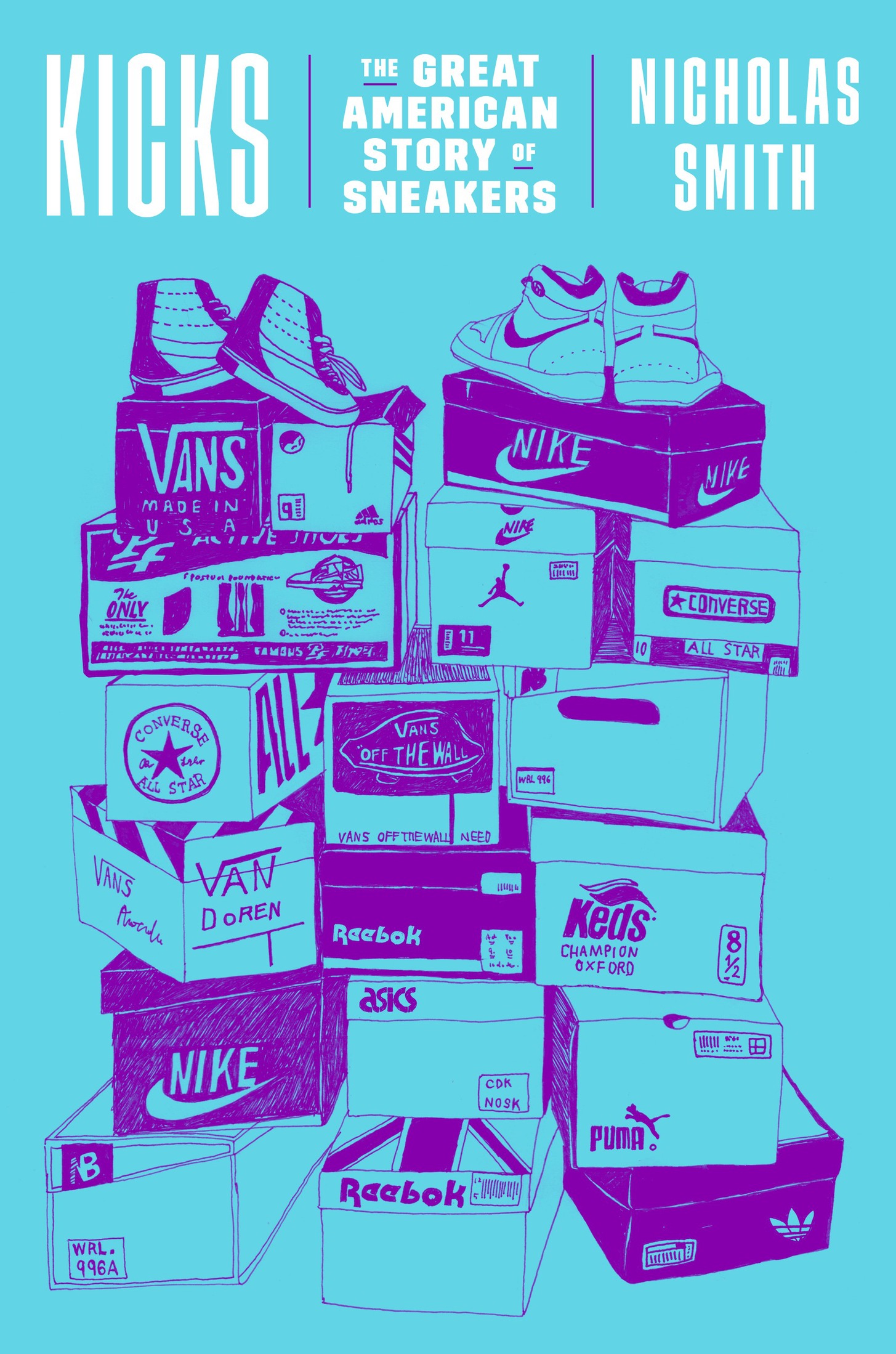
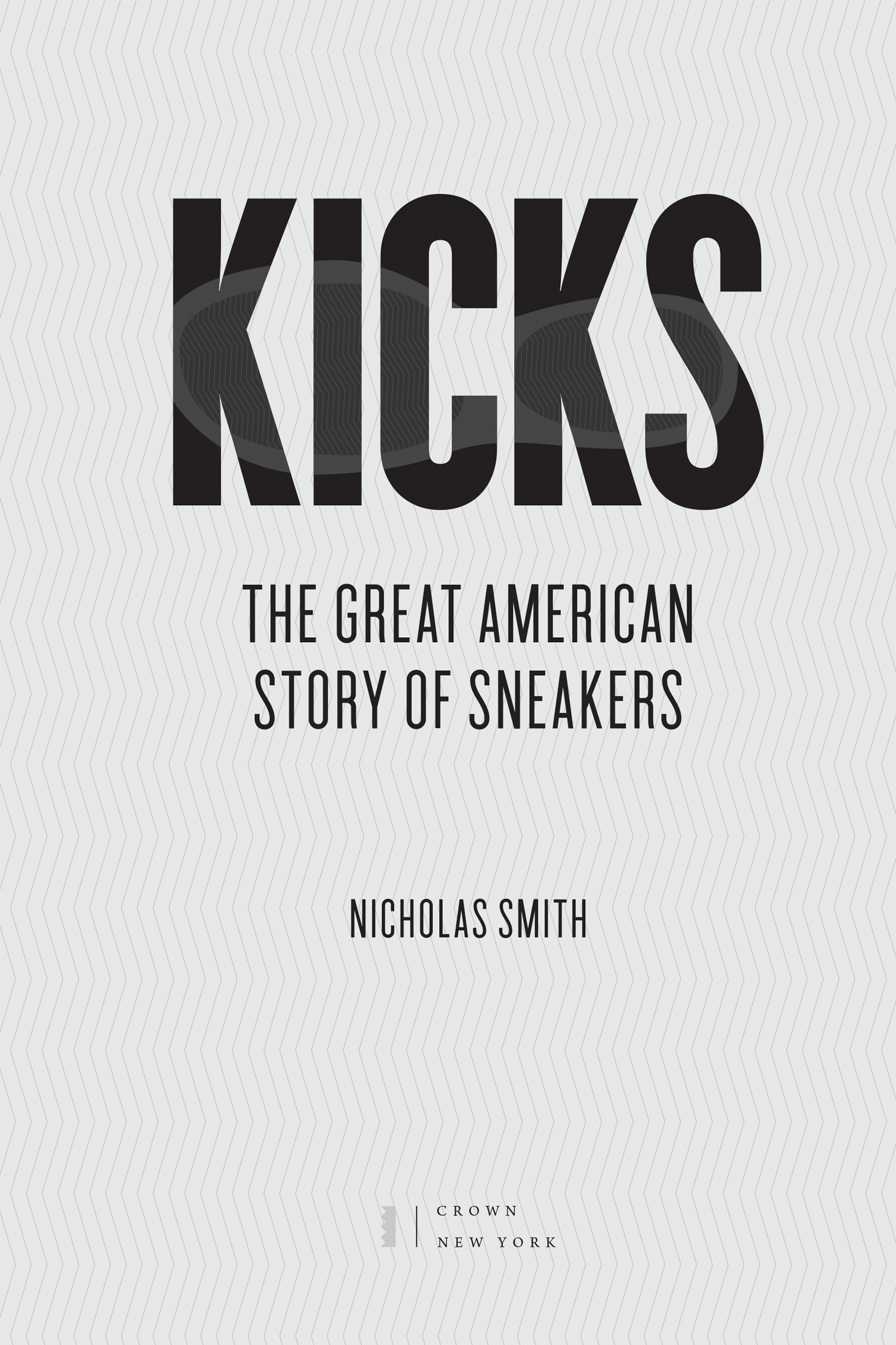
Copyright 2018 by Nicholas Smith
All rights reserved.
Published in the United States by Crown, an imprint of the Crown Publishing Group, a division of Penguin Random House LLC, New York.
crownpublishing.com
CROWN and the Crown colophon are registered trademarks of Penguin Random House LLC.
For a list of photo credits, see .
Library of Congress Cataloging-in-Publication Data
Names: Smith, Nicholas, author.
Title: Kicks : the great American story of sneakers / by Nicholas Smith.
Description: First Edition. | New York : Crown Publishing, [2018] | Includes bibliographical references.
Identifiers: LCCN 2017040841| ISBN 9780451498113 (Hardcover) | ISBN 9780451498120 (Trade Paperback) | ISBN 9780451498137 (eBook)
Subjects: LCSH: SneakersUnited States. | SneakersSocial aspectsUnited States.
Classification: LCC GV749.S64 S58 2018 | DDC 685/.31dc23 LC record available at https://lccn.loc.gov/2017040841
ISBN9780451498113
Ebook ISBN9780451498137
Cover design by Christopher Brand
Cover illustration by Yunosuke Otani
v5.2
ep
To my wife, Ghadeer, who still owns more sneakers than I do
You cannot be comfortable on a high heel shoe the way you would be in sneakers. But, you know, not everyone wants to be in sneakers. Sneakers are for different purposes.
CHRISTIAN LOUBOUTIN
In L.A. we wearing Chucks, not Ballys.
TUPAC SHAKUR
Its gotta be the shoes. Most people have heard it, even if they cant remember the source: a 1989 commercial for the Nike Air Jordan IIIs. In the commercial, Spike Lee, playing his alter ego Mars Blackmon from the movie Shes Gotta Have It, lists all the possible reasons Michael Jordan is the best player in the universe.
His dunks? asks Lee.
No, Mars, says Jordan.
His shorts? asks Lee.
No, Mars, says Jordan.
His bald head? asks Lee.
No, Mars, says Jordan.
His shoes? asks Lee.
Jordan denies it, but Lee keeps circling back to the shoe guess. In the thirty-second ad, the word shoes is spoken ten times.
Before the familiar swoosh appears onscreen, a cheeky disclaimer informs us that Mr. Jordans opinions do not necessarily reflect those of Nike, Inc., but everyone already knows the message here: Its gotta be the shoes.
Nike sold millions of Air Jordans through that ad campaign, and Lees most famous line was bound for pop culture immortality. But the ad didnt work just because it was catchy and star-studded; it was also a clever update of an idea that most of us have lived with from a young age: the idea that shoes are magical.
Cinderellas glass slipper makes her a princess. Dorothys ruby slippers not only transport her back to Kansas but keep the Wicked Witch of the West at bay. Puss-in-Boots request for footwear helps him win legitimacy for his master. With his winged sandals Hermes can fly. The seven-league boots of European folklore let the wearer travel great distances in a single step. A young orphans shoes compel her to dance in Hans Christian Andersens The Red Shoes, and in the Grimms version of Snow White, the wicked stepmother dances herself to death in charmed red-hot iron heels.
Fast-forwarding a few centuries, Lil Bow Wow finds a pair of magic sneakers that let him play professional basketball in 2002s Like Mike, and in the Harry Potter series a teleporting portkey comes in the form of an old boot. And at the end of the first Sex and the City movie, the first thing Carrie Bradshaw uses in her new apartment-size closeta fairy tale for anyone familiar with Manhattan real estateis the shoe rack.
When Jacob and Wilhelm Grimm were collecting their folktales in the early eighteenth century, footwear sometimes did mean the difference between life and death, as well as between rungs of the social ladder. Without owning a reliable pair of boots, finding work was difficult; sturdy shoes gave the lower-class wearer the unmagical but useful ability not to starve to death. Until the mid-1800s, shoes were made entirely by hand in a long and costly process. The supply was always limited, and shoes were coveted highly enough to inspire generations of storytellers.
Shoes may no longer mean the difference between starving and not, but they still have great symbolic power. Its embedded in our language: to understand each other we must walk a mile in someones shoes. A guess about ones character will prove true if the shoe fits. Someone irreplaceable has hard shoes to fill. Someone may offer to eat his shoe if hes wrong. An uncomfortable reversal means that the shoe is on the other foot. Before the inevitable, we wait for the other shoe to drop.
Our contact with shoes as objects is unusually intimate: shoes change, adjust, and warp to fit us like no other piece of clothing. Finding a worn-out vintage rock tee at a Goodwill store might be a hipsters treasure; finding a worn-out pair of sneakers is infinitely less so. Their soles both connect us to our environment and protect us from it. They can be either utilitarian or expressive or both, whatever we choose. Somewhere in these qualities is, maybe, the source of their appeal as, well, more than shoes.
Which takes us back to Jordan and his Nikes. Ever since there have been sports stars to look up to, kids have played their heroes on the fields, courts, and sandlots. Im DiMaggio. Im Elway. Im LeBron. By pairing the superhuman Jordan with the Everyman Lee, the Nike commercials suggested that there was a way to bridge the gapa hundred-dollar way, but a way nonetheless. It was a modern version of the old story: an ordinary kid could wear a pair of sneakers and jump like the Jumpman, just as a farm girl could put on a pair of red slippers to get home from the Land of Oz.
For a long time, sneakers werent something I thought about. When I was growing up, they were just shoes you wore every day until they wore out. The first sneakers I can remember treating with any reverence were a pair of Nike Air Flight Turbulence I wore when I played basketball freshman year of high school. I bought them partly because theyd been advertised in a campaign featuring Damon Stoudamire, a rookie point guard for the Toronto Raptors whom I knew from his time with the Arizona Wildcats, the most popular college team in my hometown. I also bought them because they were last years model and retailed for $40 at the Nike outlet, a steal at a time when the latest Air Jordans sold for $150.
I loved them, with their wavy black-and-white lines and familiar swoosh. For the duration of my freshman season I wore them only for practice and games, after which they went right back into the box. They might not have helped a lanky, uncoordinated fourteen-year-old score a career high of five points, but I sure felt like they did. The one time I wore them off court was when friends who had moved away from my small town came to visit. They had new haircuts, new glasses, a binder full of new CDs. I had my new shoes.
It would be years before I again found that sneaker magic. Basketball had long since melted away and been replaced by distance running when I read Christopher McDougalls Born to Run, an ode to running that featured unforgiving 100-mile races, a colorful cast of ultrarunners, punishing desert environments, and an indigenous Mexican tribe whose members seem to run forever in thin sandals. As a marathoner with recurring knee pain, I was interested in what McDougall had found to be a near constant among ultrarunners: minimalist footwear. The implicit promise of the book seemed to be that I could join their tribe and kiss knee pain good-bye by ditching my chunky Nikes. It had to be the shoes.
Font size:
Interval:
Bookmark:
Similar books «Kicks: The Great American Story of Sneakers»
Look at similar books to Kicks: The Great American Story of Sneakers. We have selected literature similar in name and meaning in the hope of providing readers with more options to find new, interesting, not yet read works.
Discussion, reviews of the book Kicks: The Great American Story of Sneakers and just readers' own opinions. Leave your comments, write what you think about the work, its meaning or the main characters. Specify what exactly you liked and what you didn't like, and why you think so.










